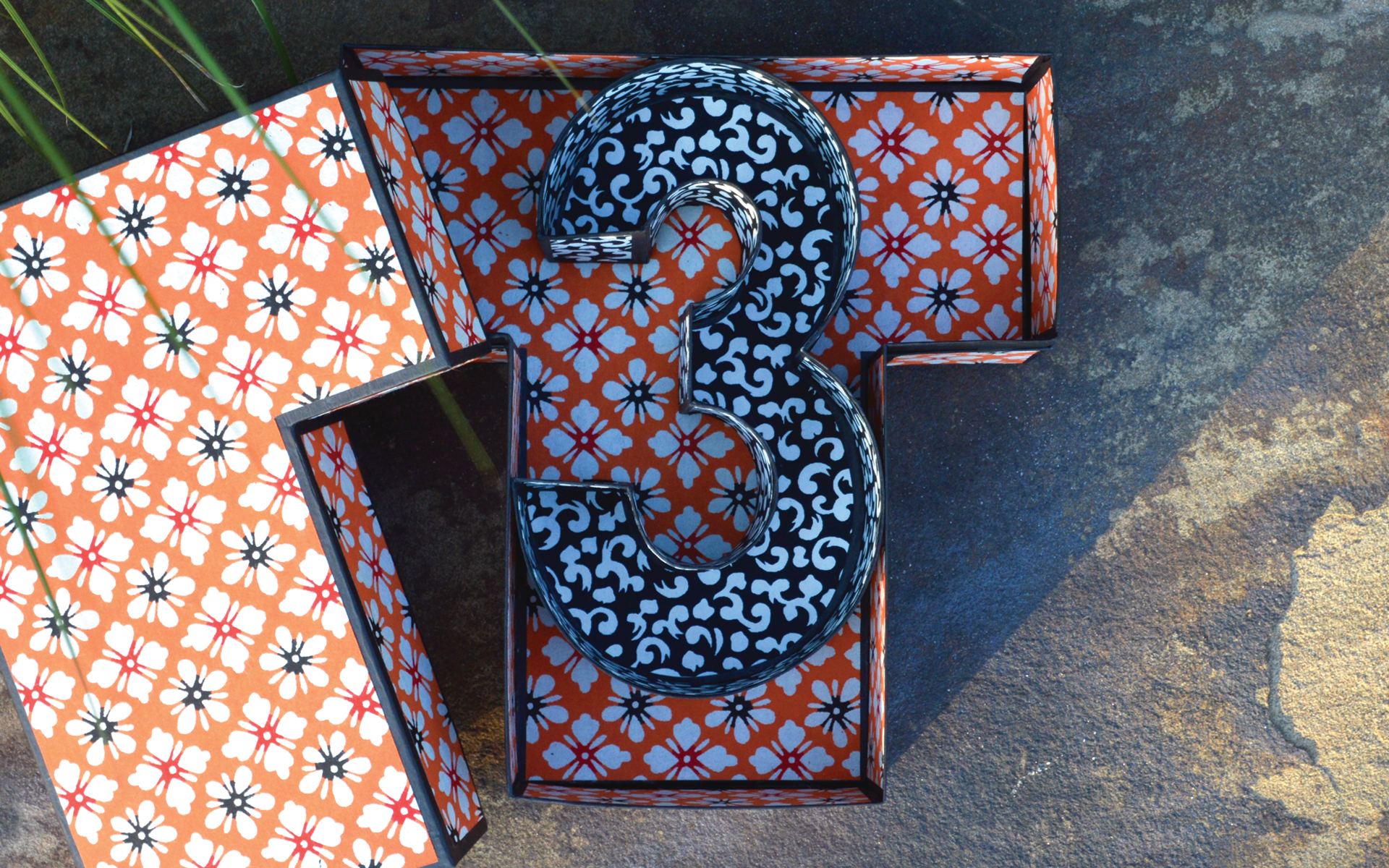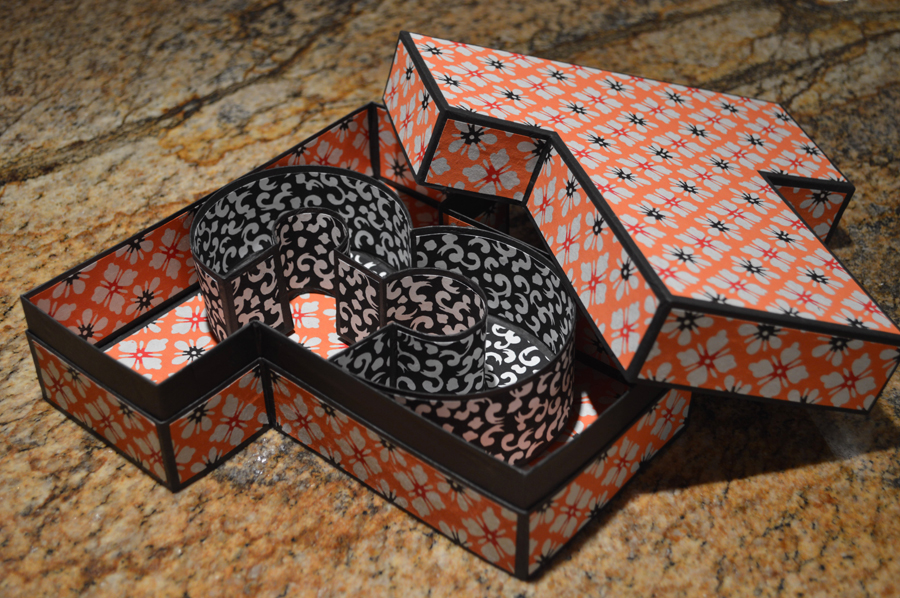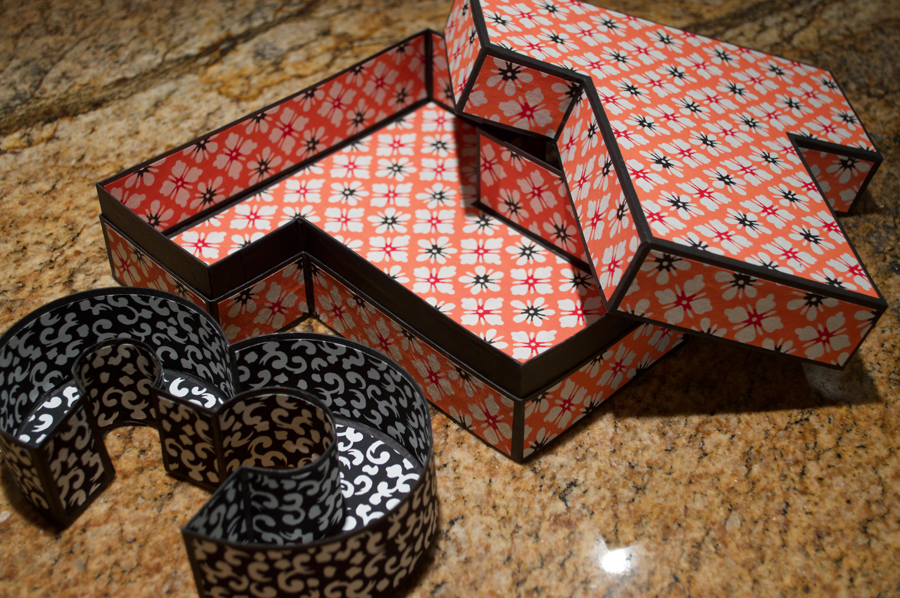Translation, “in the midst of busyness, there is free time.”

The Japanese have many traditions. The culture is old and therefore patient. I often wish I were more patient. However, one of the ways I do slow down and detach from the busyness of work is my T3 projets. This one ended up being a great opportunity for patience and going slow.
I read an article about making traditional Japanese paper boxes. The paper crafts, including folding (origami) and making small decorative objects, is very embedded in the cultural history. This article referred to the handmade and hand stenciled paper that was commonly used, Chiyogami, and went on to basically say you could use any decorative paper.
Not me. If I was going to make a traditional Japanese paper box, I was going to make it the traditional way. Short story: it took months to locate, select, order and receive the 2 full size sheets of handmade Washi stenciled in traditional Chiyogami patterns.
Originally the term Washi referred to Japanese handmade paper produced in a traditional manner. The term Washi translates to Japanese paper (wa=Japanese shi=paper). Kozo, mitsumata, and gampi are the three basic fibers most commonly used in the Washi making process.
Papermaking was first brought to Japan by Buddhist monks, but Japan quickly became the leading producer of paper. Traditionally the Washi making process was undertaken by farmers as a seasonal task and Kozo, mitsumata, and gampi crops were planted along with their regular crops. The farmers would process the crops into paper during the months when it was to cold for them to work outside. This had the added benefit of the availability of very cold water which is necessary for the process.
The word Chiyogami comes from the roots chiyo (thousand generation) and gami (paper). Chiyogami is Washi paper that has been hand stenciled or printed with traditional Japanese imagery using bright colors and patterns. Appearing during the Edo period, Chiyogami was traditionally used to craft paper objects, especially dolls. It gained tremendous popularity among origami fans because it offered a great visual presence and was less costly then some of the other Washi papers at the time. It still remains a favorite among folders and adds a richness to any paper craft project.
With paper in hand and an idea about how I would make the box itself, I got started.
Making the “T” box was not difficult. The bottom has edges that folded down to glue to the insides of the sides. Then I fashioned an inner liner that was taller in order to have something for the lid to fit over. The lid is like a traditional box, only in a not-so-traditional shape. The “3” was more complicated and it took a lot of work and molding of the paper board to get the curves in the three correct. Finally, I covered everything in black tissue.
Then it was time to cut and glue on the Chiyogami. Given the cost and difficulty in obtaining the paper, I was a little nervous to start hacking my beautiful, hand numbered, full sheets into bits and pieces, but that’s what it was for. Careful measurements were reduced by the margins desired to show the black tissue at the edges and corners, and piece by piece the colorful paper transformed the black form into art.



I’m very pleased with the result. Sayōnara
